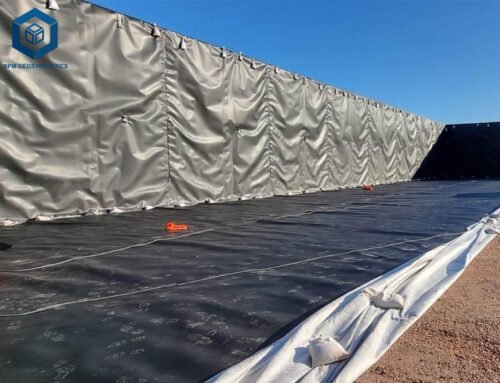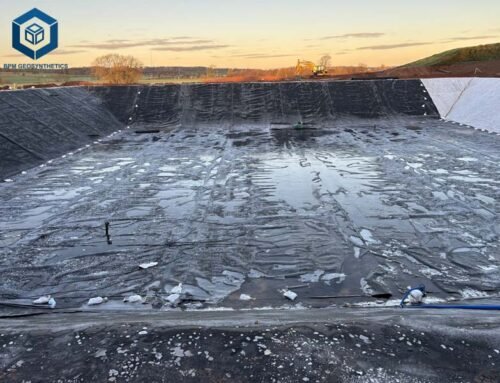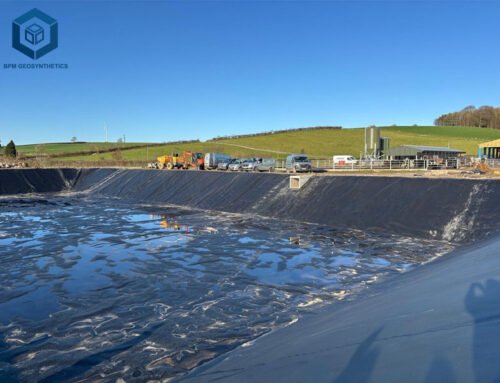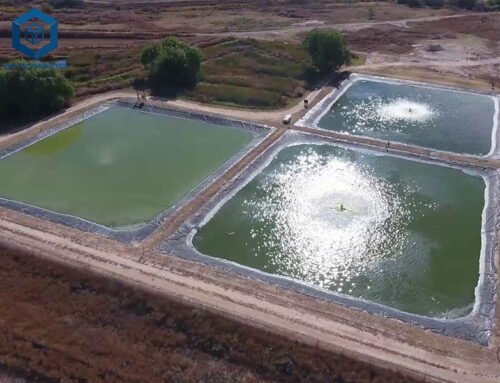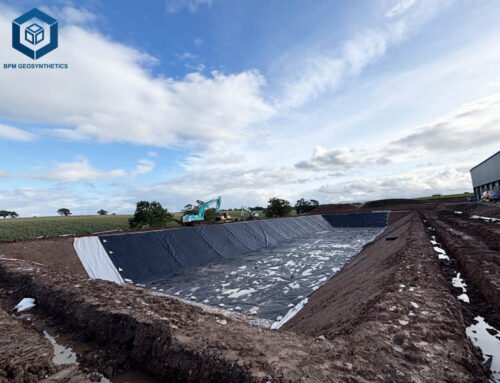Pond liners are indispensable for creating and maintaining water bodies such as garden ponds, fish farms, irrigation reservoirs, and industrial wastewater systems. Among the various options available, a 500-micron (0.5 mm) pond liner is a popular choice due to its balance of durability, flexibility, and cost-effectiveness. But how much does a Pond Liner 500 Micron Price? This comprehensive guide explores the pricing, specifications, material types, installation costs, regional variations, and recent market trends to provide you with detailed, data-driven insights. Whether you’re a homeowner planning a backyard pond or a farmer setting up an aquaculture system, this article will help you make an informed decision.
1. Understanding 500-Micron Pond Liners
A 500-micron pond liner, equivalent to 0.5 mm or approximately 20 mil in thickness, is a geomembrane designed to prevent water seepage into the soil. Made from materials like high-density polyethylene (HDPE), low-density polyethylene (LDPE), polyvinyl chloride (PVC), or ethylene propylene diene monomer (EPDM), these liners are widely used in applications ranging from decorative ponds to large-scale water containment projects. The 500-micron thickness offers sufficient durability for medium-sized ponds while remaining flexible for easier installation.
Key Benefits of 500-Micron Pond Liners
- Impermeability: Ensures efficient water retention, preventing loss through seepage.
- Durability: Resists punctures, tears, and UV degradation when properly treated.
- Flexibility: Adapts to various pond shapes and contours.
- Versatility: Suitable for fish ponds, irrigation reservoirs, and wastewater containment.
- Cost-Effectiveness: Balances durability and affordability for medium-scale projects.
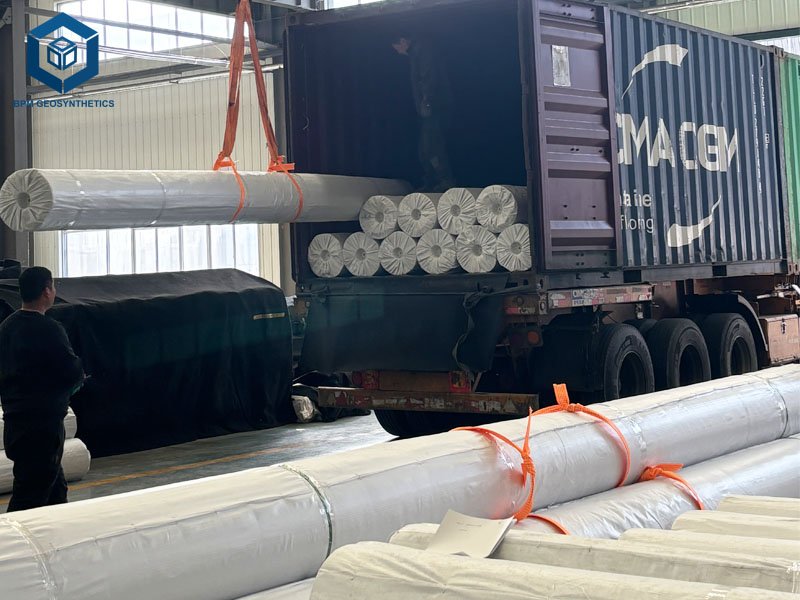
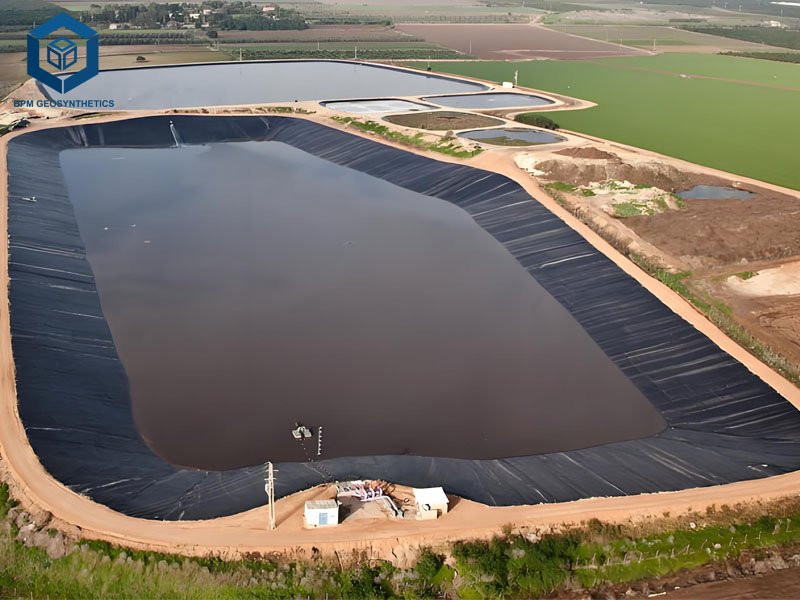
2. Factors Influencing Pond Liner 500 Micron Price
The cost of a 500-micron pond liner depends on several factors, including material type, size, installation complexity, and regional market dynamics. Below, we analyze these factors with precise data to provide clarity.
2.1 Pond Liner 500 Micron Price – Material Type
The material of the pond liner significantly impacts its price and suitability for specific applications:
- High-Density Polyethylene (HDPE): Known for its high tensile strength (640 N per ASTM D6693) and chemical resistance, HDPE liners cost $0.20–$0.62 per square foot. They are ideal for fish ponds and large reservoirs due to their durability (10–20 years lifespan) and puncture resistance (150 lbs/inch).
- Low-Density Polyethylene (LDPE): More flexible but less durable, LDPE liners range from $0.15–$0.40 per square foot. They are suitable for temporary ponds or smooth surfaces but have lower puncture resistance (100 lbs/inch).
- Polyvinyl Chloride (PVC): A cost-effective option at $0.10–$0.30 per square foot, PVC liners are less durable (5–10 years) and not always fish-safe, making them suitable for decorative ponds.
- Ethylene Propylene Diene Monomer (EPDM): A premium rubber liner costing $0.50–$1.00 per square foot, EPDM is highly flexible (300% stretchability) and fish-safe, ideal for koi ponds and harsh climates.
- Reinforced Polyethylene (RPE): Stronger and lighter than HDPE, RPE liners cost $0.40–$0.90 per square foot and are 2–3 times more puncture-resistant, making them suitable for large irrigation projects.
- Linear Low-Density Polyethylene (LLDPE): Offering a balance of flexibility and strength, LLDPE liners cost $0.30–$0.60 per square foot and are used in applications requiring moderate durability.
2.2 Pond Liner 500 Micron Price – Size and Surface Area
The size of the pond directly affects the total cost, as larger liners require more material and potentially higher shipping and installation expenses. To calculate the required liner size:
- Formula: Liner Length = Pond Length + (2 × Depth) + 2 feet (overlap). Liner Width = Pond Width + (2 × Depth) + 2 feet (overlap).
- For example, a 20 ft x 15 ft pond with a 3 ft depth requires a liner of approximately 26 ft x 21 ft, or 546 square feet. At $0.50 per square foot (HDPE), the material cost would be $273. For a 1-acre pond (43,560 square feet), costs range from $8,712–$27,000 depending on the material.
2.3 Pond Liner 500 Micron Price – Thickness and Durability
At 500 microns (0.5 mm), these liners are suitable for medium-sized ponds (2–6 ft deep) with moderate water pressure. They offer decent puncture resistance (e.g., 150 lbs/inch for HDPE) and a lifespan of 10–20 years for HDPE and EPDM, compared to 5–10 years for PVC. Thicker liners (e.g., 1.0 mm) cost 10–20% more but are unnecessary for most 500-micron applications unless the pond has rough terrain or high chemical exposure.
2.4 Pond Liner 500 Micron Price – Installation Complexity
Professional installation adds $0.20–$1.50 per square foot, depending on site conditions, labor rates, and project complexity. Key factors include:
- Site Preparation: Smooth surfaces require minimal preparation, while rocky terrain may need excavation or geotextile underlayment ($0.25–$0.40 per square foot).
- Welding: For large ponds, multiple liner panels are welded on-site using hot wedge machines or heat guns, adding $0.05–$0.15 per square foot.
- Geographical Location: Remote areas incur higher transportation and labor costs, increasing expenses by 10–20%.
2.5 Pond Liner 500 Micron Price – UV Resistance and Additives
UV-treated liners, essential for exposed ponds, cost 10–15% more. For example, a UV-stabilized 500-micron HDPE liner costs $0.55 per square foot compared to $0.50 for a non-treated version. Additives for chemical resistance (e.g., resistance to acids or petroleum) add $0.02–$0.05 per square foot.
2.6 Pond Liner 500 Micron Price – Brand and Supplier
Reputable brands like BPM Geosynthetics charge higher prices due to quality certifications (e.g., IS 15351:2015, GRI-GM13) and warranties (up to 5 years). For example, BPM’s 500-micron HDPE liners cost $0.62–$0.80 per square foot, while lesser-known brands may offer liners at $0.10–$0.20 per square foot with shorter warranties.
3. 500-Micron Pond Liner Prices: Regional Insights
Prices in Kenya
In Kenya, where water conservation is critical for agriculture and aquaculture, 500-micron HDPE liners are widely used. Prices range from:
- KSh 230–300 per square meter ($0.18–$0.23 per square foot)for UV-treated HDPE liners from suppliers like Grekkon Limited and Aqua Hub Kenya.
- Installation Costs: KSh 100–150 per square meter ($0.08–$0.12 per square foot), depending on site preparation and welding requirements.
- For a 200-square-meter pond (2,153 square feet), material costs are KSh 46,000–60,000 ($350–$460), with installation adding KSh 20,000–30,000 ($150–$230).
Global Price Ranges
- United States: $0.20–$0.62 per square foot for 500-micron HDPE liners, with installation costs of $0.50–$2.00 per square foot. Bulk orders (>10,000 square feet) reduce material costs by 20–30%.
- India: ₹70–117 per square meter ($0.08–$0.14 per square foot) due to lower manufacturing costs and proximity to raw material sources.
- China: $0.15–$0.50 per square foot, benefiting from low labor costs ($2–$5/hour vs. $15–$25/hour in the U.S.) and efficient shipping.
- Australia: $0.50–$1.50 per square foot, with higher costs for custom sizes and remote installations.
4. Specifications and Parameters for 500-Micron Pond Liners
Choosing the right 500-micron pond liner requires evaluating project-specific requirements. Below are key specifications to consider:
4.1 Material Properties
- HDPE: Offers high tensile strength (640 N), puncture resistance (150 lbs/inch), and chemical resistance, making it ideal for fish ponds and industrial applications. Lifespan: 10–20 years.
- LDPE: More flexible but less durable, with a puncture resistance of 100 lbs/inch. Suitable for smooth surfaces and temporary ponds. Lifespan: 5–10 years.
- EPDM: Highly flexible (300% stretchability), fish-safe, and resistant to cold temperatures (down to -85°F). Lifespan: 15–20 years.
- PVC: Affordable but less durable, with a lifespan of 5–10 years. Not recommended for fish ponds due to potential toxicity.
- RPE: 2–3 times more puncture-resistant than HDPE, lightweight, and suitable for large irrigation projects. Lifespan: 15–20 years.
4.2 Thickness Suitability
A 500-micron liner is ideal for:
- Small to Medium Ponds (2–6 ft deep): Handles moderate water pressure and smooth surfaces.
- Aquaculture: Suitable for fish and shrimp ponds due to non-toxicity (HDPE, EPDM).
- Irrigation Reservoirs: Prevents seepage in agricultural water storage systems.
For rough terrain or high-pressure applications (e.g., landfills), thicker liners (1.0–1.5 mm) may be required, increasing costs by 10–20%.
4.3 UV and Chemical Resistance
- UV-treated liners are essential for exposed ponds, extending lifespan by 5–10 years. For example, BPM’s UV-stabilized HDPE liners meet GRI-GM13 standards.
- Chemical-resistant liners (HDPE, LLDPE) are necessary for wastewater or industrial ponds, adding $0.05–$0.15 per square foot.
4.4 Welding and Seaming
- Factory Welding: Ensures leak-proof seams for large liners, adding $0.05–$0.10 per square foot.
- On-Site Welding: Required for oversized liners, using hot wedge machines for HDPE or heat guns for PVC.
4.5 Geotextile Underlayment
A non-woven geotextile underlay ($0.25–$0.40 per square foot) protects liners from punctures on rocky surfaces, extending lifespan by 20–30%.
5. Installation Process and Costs
Proper installation is crucial for maximizing a 500-micron pond liner’s performance. Below is a step-by-step guide:
5.1 Site Preparation
- Clearing: Remove rocks, roots, and debris to create a smooth surface. Sharp objects can puncture the liner, leading to leaks.
- Excavation: Dig the pond to the desired dimensions, ensuring smooth slopes (e.g., 2:1 or 3:1 for stability).
- Geotextile Underlay: Lay a non-woven geotextile or sand layer on rocky terrain to prevent punctures. Cost: $0.25–$0.40 per square foot.
- Anchor Trench: Dig a trench (1 ft deep, 1 ft wide) around the pond’s perimeter to secure the liner edges.
5.2 Liner Placement
- Unrolling: Carefully unroll the liner to avoid stretching or creasing. For large ponds, multiple panels are welded together.
- Fitting: Adjust the liner to conform to the pond’s contours, leaving 1–2 feet of overlap for anchoring.
5.3 Seaming and Testing
- Welding: Use hot wedge machines for HDPE or heat guns for PVC to create leak-proof seams. Cost: $0.05–$0.15 per square foot.
- Testing: Fill the pond gradually over days or weeks to check for leaks, ensuring proper installation.
5.4 Securing and Finishing
- Anchoring: Tuck liner edges into the anchor trench and cover with soil.
- Protection: Install fencing to prevent damage from animals or humans.
5.5 Installation Costs
- Kenya: KSh 100–150 per square meter ($0.08–$0.12 per square foot).
- United States: $0.50–$2.00 per square foot, higher for complex sites.
- Australia: $0.50–$1.50 per square foot, including geotextile underlay.
- For a 2,000-square-foot pond, installation costs range from $1,000–$4,000 in the U.S.
6. Recent Trends in the Pond Liner Market
The pond liner market is evolving due to technological advancements and environmental demands. Key trends include:
- Sustainable Materials: Eco-friendly liners made from recycled HDPE or biodegradable polymers are gaining traction, costing 5–10% more than standard liners. Over 65% of manufacturers are developing biodegradable options.
- Aquaculture Growth: In regions like Kenya and India, fish farming has increased demand for 500-micron HDPE and EPDM liners, stabilizing prices. Aquaculture accounts for 60% of liner sales in these regions.
- Custom Sizes: Manufacturers like BPM Geosynthetics offer tailored liners up to 150,000 square feet, reducing waste but increasing costs by 5–10%.
- Global Supply Chain: Raw material shortages and shipping costs have raised prices by 5–8% since 2023, particularly in the U.S. and Europe.
- Smart Monitoring: In Japan and South Korea, liners integrated with smart sensors for leak detection are emerging, adding 10–15% to costs.
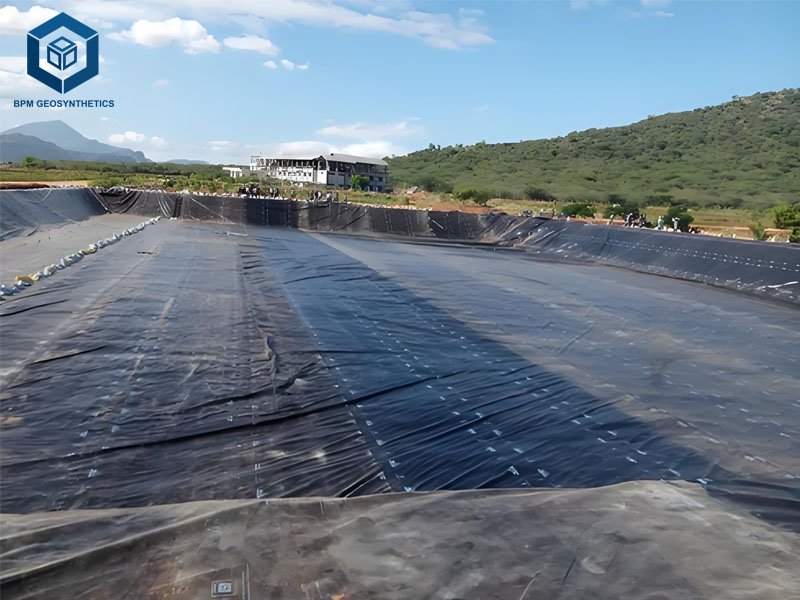
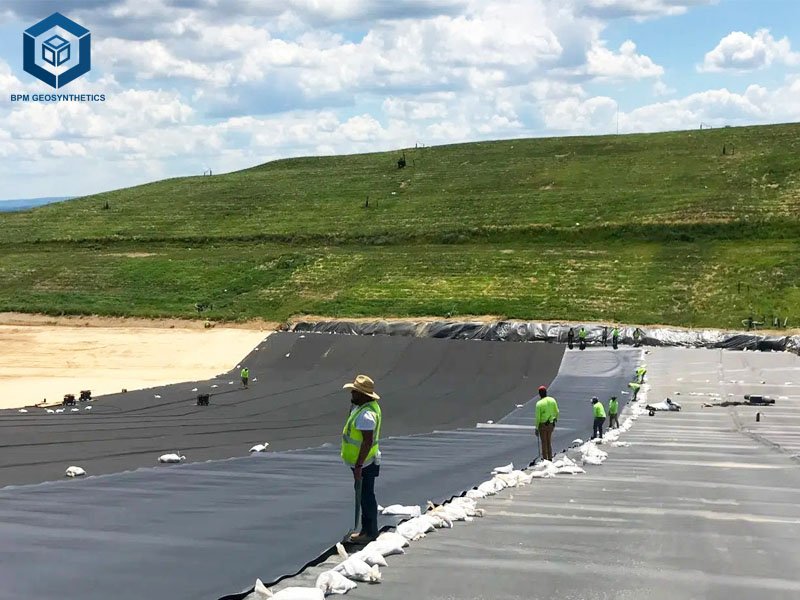
7. Cost-Saving Tips for 500-Micron Pond Liner Projects
To optimize your budget without compromising quality:
- Compare Suppliers: Request quotes from multiple vendors like BPM Geosynthetics, Mukta Polymers, or Kaveri Agri Products.
- Bulk Purchasing: Larger rolls reduce per-square-foot costs by 20–30%. For example, a 10,000-square-foot HDPE liner may cost $0.40 per square foot compared to $0.50 for smaller rolls.
- DIY Installation: For small ponds, DIY installation can save $0.50–$1.00 per square foot, but ensure proper training to avoid damage.
- Choose Appropriate Material: Avoid over-specifying (e.g., EPDM for decorative ponds) to save costs. HDPE is sufficient for most 500-micron applications.
- Maintenance: Regular cleaning and fencing extend liner lifespan by 20–30%, reducing replacement costs.
8. Case Study: 500-Micron Pond Liner in Kenya
Consider a Kenyan farmer planning a 1,000-square-meter fish pond with a 500-micron HDPE liner:
- Material Cost: KSh 250 per square meter x 1,000 = KSh 250,000 ($1,923).
- Installation Cost: KSh 120 per square meter x 1,000 = KSh 120,000 ($923).
- Geotextile Underlay: KSh 150 per square meter x 1,000 = KSh 150,000 ($1,154).
- Total Cost: KSh 520,000 ($4,000).
This investment ensures reliable water storage for fish farming, potentially increasing yields by 20–30% annually.
9. Conclusion
The price of a 500-micron pond liner varies based on material, size, installation, and regional factors, with costs ranging from $0.10–$1.00 per square foot globally and KSh 230–300 per square meter in Kenya. HDPE and EPDM are the most popular choices for their durability and fish-safe properties, while PVC offers a budget-friendly alternative for decorative ponds. By understanding these factors and leveraging cost-saving strategies, you can select the right liner for your project while staying within budget. For personalized quotes, contact reputable suppliers like BPM Geomembrane.

